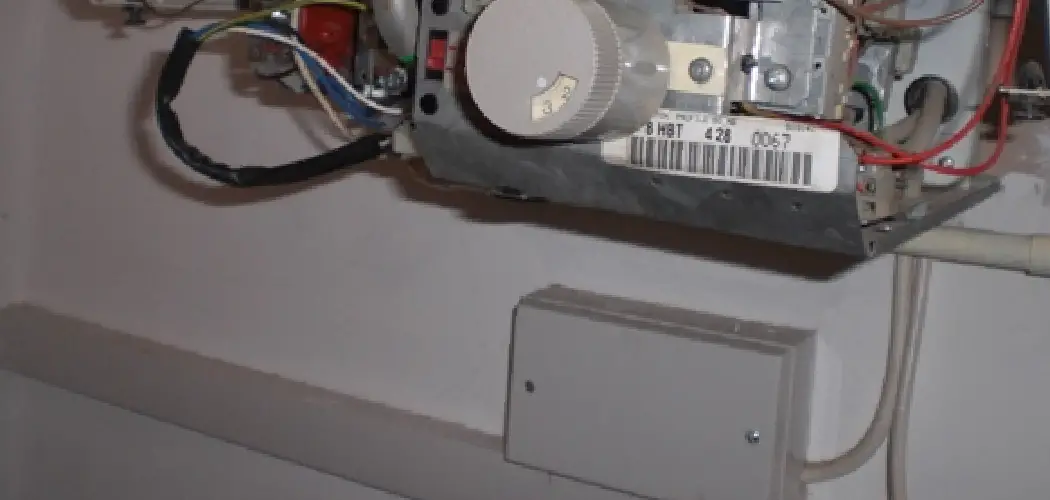Carbon monoxide (CO) is an insidious adversary within the home, a colorless, odorless gas that poses a significant threat to human health, often with fatal consequences if not promptly addressed. CO poisoning can occur without warning, subtly infiltrating the living spaces of unsuspecting families, making it imperative to recognize its presence early.
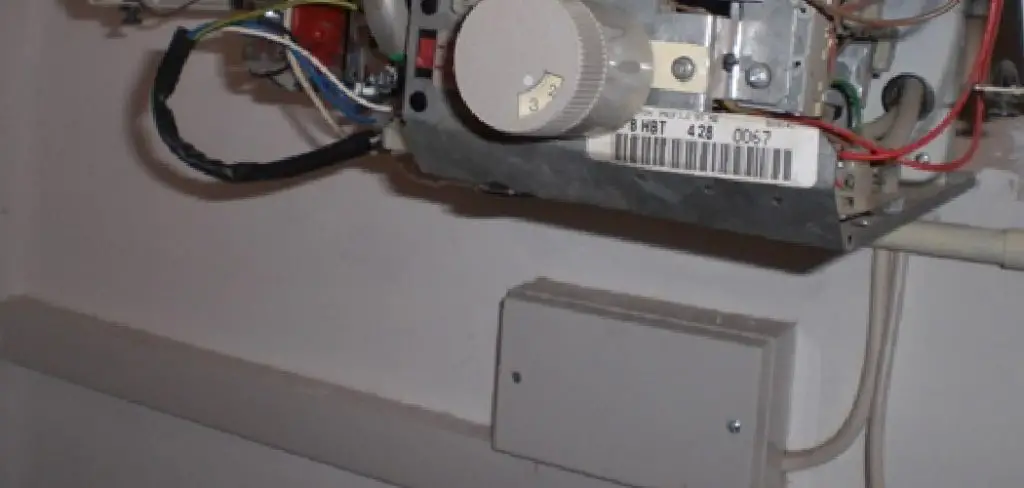
Furnaces, integral to many homes for warmth, can unfortunately become sources of CO if they malfunction or are poorly maintained. Knowing how to tell if furnace is leaking carbon monoxide is crucial for the safety and well-being of all household members.
This knowledge can mean the difference between life and death, emphasizing the critical importance of awareness and preventive measures against CO exposure. The following sections will explore the signs of a furnace leak, the vital steps to take upon detection, and how regular maintenance can mitigate risks, ensuring a safe, healthy living environment for you and your loved ones.
What is Carbon Monoxide?
Carbon monoxide (CO) is a deadly, colorless, and odorless gas produced as a byproduct of the incomplete combustion of various fuels, including natural gas, propane, oil, and wood. This hazardous gas forms when there isn’t enough oxygen to form carbon dioxide (CO2) during combustion processes.
Furnaces, along with other fuel-burning appliances and engines, are common sources of CO in the home environment. When these appliances malfunction, are improperly installed or are poorly maintained, they can leak carbon monoxide into the living space instead of safely venting it outside.
Because CO cannot be seen, tasted, or smelled, its presence in the home can go undetected without the use of specialized detection equipment, posing a severe risk to the health and safety of occupants.
This stealthy nature of carbon monoxide makes it particularly dangerous, as unsuspecting individuals may not realize they are being poisoned until symptoms become severe or, tragically, fatal.
The Dangers of Carbon Monoxide Poisoning
The harms posed by carbon monoxide (CO) poisoning are both stealthy and severe, necessitating immediate awareness and action to mitigate its potentially fatal effects. CO poisoning symptoms can range widely depending on the level of exposure and the duration for which individuals have been subjected to the gas.
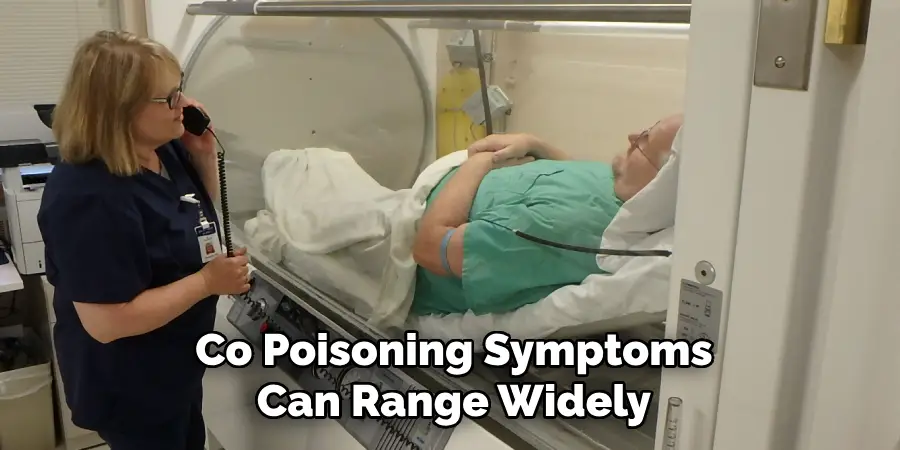
Mild symptoms include headache, dizziness, nausea, and fatigue – signs that are often mistaken for those of common illnesses, such as the flu or a cold, which can lead to dangerous delays in diagnosis and treatment.
Moderate symptoms elevate in severity to include vomiting, confusion, and shortness of breath, signaling a more significant accumulation of CO in the bloodstream. At its most perilous, CO poisoning can lead to severe symptoms such as loss of consciousness, seizures, coma, and, ultimately, death.
This gradation of symptoms underscores the insidious nature of CO poisoning; its early manifestations are easily overlooked or misattributed to less severe health issues. However, it is critical to understand that any suspicion of CO exposure warrants immediate medical attention. Calling emergency services and seeking hospital care can mean the difference between recovery and severe, irreversible health consequences.
The rapid evolution of symptoms from mild to severe emphasizes the importance of swiftly removing oneself and others from the potentially contaminated area and securing professional medical evaluation and treatment.
CO poisoning is a silent but swift assailant; recognizing its warning signs and understanding the urgency of medical intervention are crucial steps in safeguarding against its dangers.
How to Tell if Furnace Is Leaking Carbon Monoxide: Recognizing Signs of a Furnace Leak
A. Warning Signs in Your Home
Detecting a furnace leak involves being alert to indirect signs, as carbon monoxide itself remains invisible and odorless. Unusual odors near your furnace—a result of the incomplete combustion of fuel—might be the first warning sign.
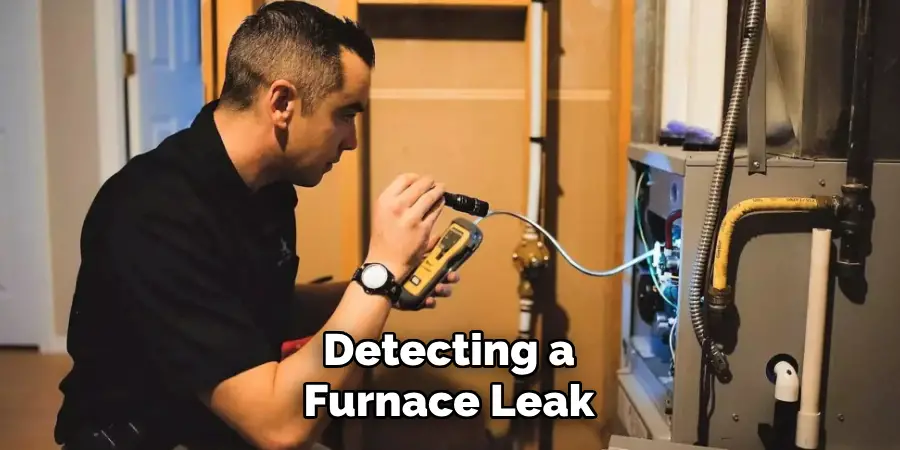
Although CO is odorless, the combustion process may produce other gases that can carry a scent. Furthermore, excessive condensation on windows or walls, particularly around the furnace area, can indicate that the furnace is not operating efficiently, leading to improper combustion and potential CO leaks.
Another clear indication of a problem is the presence of soot or a rust-like substance forming around the furnace or flue pipes. This soot buildup suggests that combustion is not occurring correctly, leading to incomplete burning and possible CO production. Lastly, pay attention to the color of the furnace’s burner flame; a healthy, efficiently functioning furnace will have a blue flame.
A yellow or flickering flame, in contrast, signifies incomplete combustion, a common precursor to carbon monoxide production. Recognizing these signs can be crucial in identifying a furnace leak early and taking swift action to correct it.
B. Importance of Carbon Monoxide Detectors
The installation of carbon monoxide detectors in your home forms a vital line of defense against CO poisoning. These detectors are designed to measure the concentration of CO in the air continuously and to alert you with an audible alarm if the levels exceed safe limits.
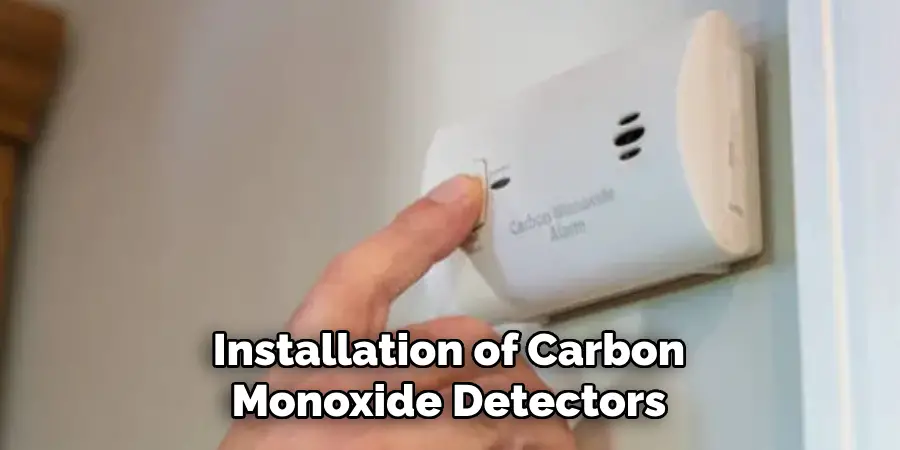
This affords you and your loved ones the crucial time needed to evacuate and seek assistance. It’s recommended that detectors be installed near bedrooms and outside sleeping areas to ensure that the alarm will awaken sleeping individuals in the event of a CO leak during the night.
For optimal protection, considering the layout and size of your living space, installing multiple CO detectors throughout your home can provide comprehensive coverage.
This is especially pertinent in multi-story homes, where a single detector may not be sufficient to detect CO levels accurately across different floors. The peace of mind that comes with having these detectors in place is invaluable, as they offer a means of early detection that can prevent the tragic consequences of CO poisoning.
In summary, CO detectors play an indispensable role in safeguarding your home, acting as an early warning system that enables prompt action to mitigate risks associated with carbon monoxide.
Risk Factors for Furnace Leaks
Furnace leaks, a leading cause of accidental carbon monoxide (CO) poisoning within homes, can stem from various sources. Understanding the factors that elevate the risk of furnace leaks is crucial in preventing potentially life-threatening situations. The causes can often be traced back to several key issues:
Improper Maintenance:
Perhaps the most critical factor contributing to the risk of furnace leaks is the lack of regular maintenance. Furnaces need periodic inspection and servicing by a qualified technician to ensure they operate efficiently and safely.
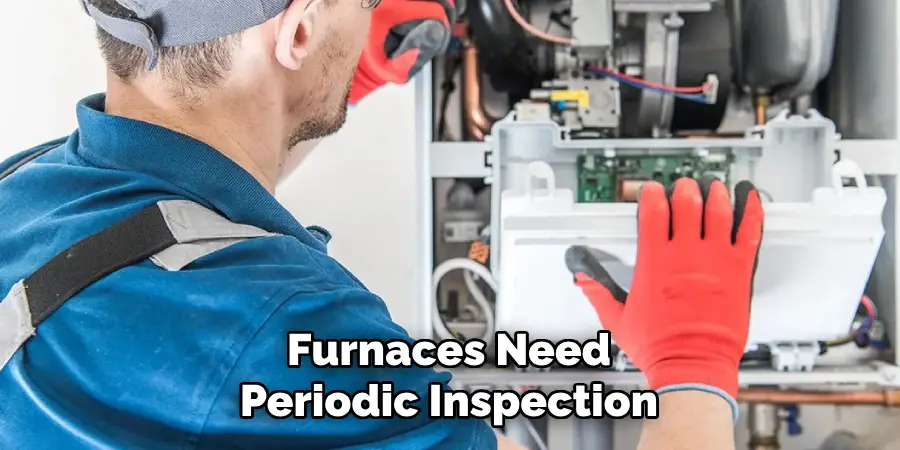
Maintenance includes checking the combustion process, cleaning the parts that could become blocked (such as the air filter and flue), and identifying wear and tear that could lead to leaks. Delayed or neglected maintenance can allow minor issues to evolve into dangerous problems, including CO leaks.
Age of the Furnace:
The age of the furnace significantly impacts its likelihood of leaking CO. Over time, furnaces may develop cracks in their heat exchanger or problems with their exhaust systems—both common sources of CO leaks.
Older units, typically those operating beyond their intended lifespan, are especially prone to these issues. It is crucial to monitor the performance and condition of an aging furnace and consider replacement if it poses a safety risk.
Blocked Vents:
The furnace’s ventilation system is designed to safely expel combustion by-products, including CO, to the outdoors. However, if vents or flues become blocked by debris, animal nests, or snow and ice accumulations, proper ventilation can be prevented.
This blockage can lead to an unsafe build-up of CO within the home. Regularly inspecting and keeping vents clear is essential for safe furnace operation.
Improper Installation:
A furnace’s installation can significantly affect its safety and efficiency. Improperly installed furnaces may have incorrect venting or air supply, leading to incomplete combustion and subsequent CO production. Installation must be carried out by a certified professional who can ensure the unit complies with all local codes and manufacturer instructions to mitigate the risk of leaks.
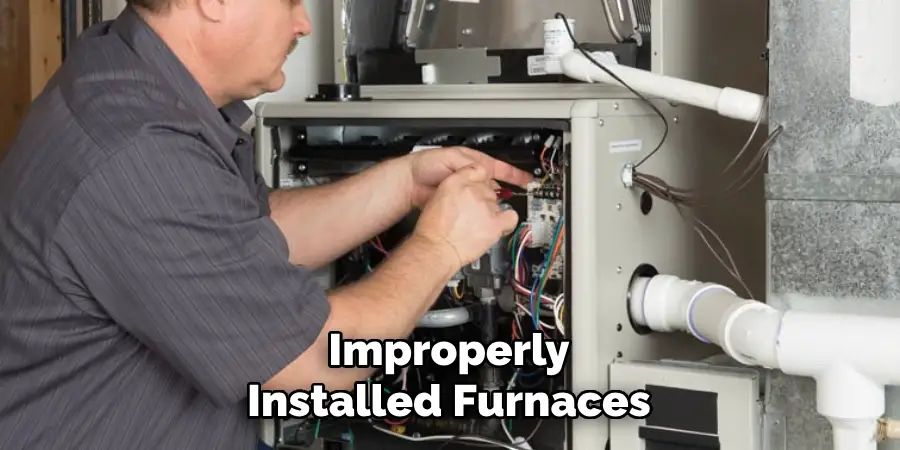
Awareness of these risk factors empowers homeowners to take proactive steps to maintain a safe environment. Regular inspections and maintenance, attention to the furnace’s age and condition, ensuring vents are not blocked, and verifying the quality of the furnace installation are all practices that significantly reduce the hazard of CO poisoning from furnace leaks.
That’s it! You’ve now learned how to tell if furnace is leaking carbon monoxide, the importance of carbon monoxide detectors, and the risk factors associated with furnace leaks.
By being aware of these warning signs and taking preventative measures, you can ensure the safety of your home and loved ones from this silent but deadly threat. Remember to schedule regular maintenance for your furnace and install CO detectors for added protection.
What to Do if Your CO Detector Alarms
When a carbon monoxide detector sounds its alarm, it is a critical warning sign that should prompt immediate action to ensure the safety and well-being of everyone in the household. Here are the steps you should follow:
A. Immediate Evacuation:
When your CO detector alerts you, evacuating your home as quickly as possible is imperative. Do not attempt to ventilate your home by opening doors or windows, as this could potentially endanger rescue personnel by altering the concentration of CO in the air.
Instead, leave everything as is to provide firefighters with accurate information about the conditions inside the house. Ensure that all occupants, including pets, leave the premises immediately and gather outside your home at a predetermined safe location.
B. Seek Medical Attention:
Once you have safely evacuated, seeking medical attention for everyone in the household is crucial, even if no one exhibits CO poisoning symptoms. Symptoms can be subtle and delayed, making it essential to call 911 or head to the nearest emergency room for evaluation.
Inform medical personnel that you’ve been exposed to potentially high levels of carbon monoxide so they can administer the appropriate tests and treatments.
C. Do Not Re-Enter the Home:
Under no circumstances should you re-enter your home until it has been declared safe by qualified professionals. The risk of CO exposure remains high until the source of the CO has been identified and rectified.
Stay clear of the property and wait for emergency services or a certified technician to conduct a thorough inspection of your furnace and home’s ventilation system. You should consider going back inside only when they have determined that it is safe to return.
D. Turn Off the Furnace:
If it is safe and you are able to do so, turning off the furnace from the main shut-off valve can stop further CO production. However, the priority must always be to evacuate all household members and pets safely without delay.
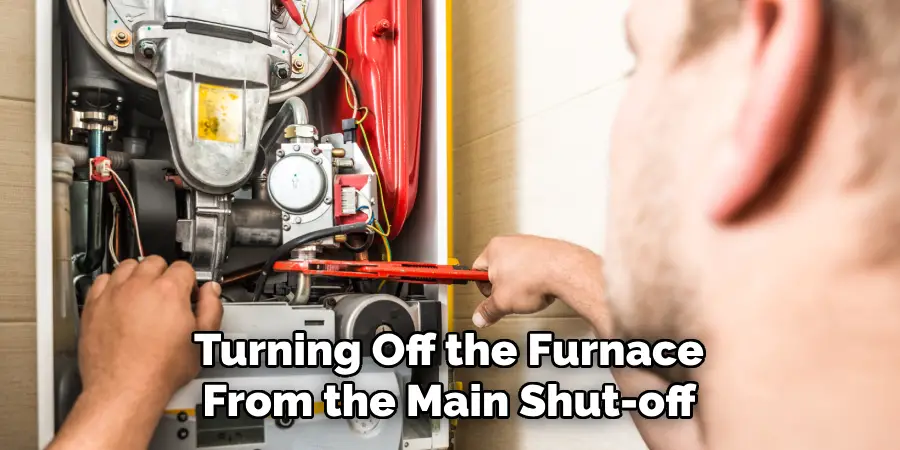
Do not waste precious moments attempting to locate or access the shut-off valve if it puts anyone at risk. Instead, focus on evacuating the premises immediately and leave the assessment and repair to experienced professionals who are well-equipped to handle such emergencies safely.
Professional Inspection and Furnace Repair
After a CO detector alarm or when a leak is suspected, enlisting the service of a qualified technician for a furnace inspection becomes paramount. This essential step not only aids in pinpointing the cause of the carbon monoxide emission but also in implementing corrective measures to ensure the safety of the household.
A professional inspection typically involves a thorough evaluation of the furnace’s components and performance. This includes ensuring that the ventilation system and flue are functioning optimally to prevent the accumulation of hazardous gases.
The technician will also meticulously inspect the heat exchanger for any signs of cracks or damage, as these are common sources of CO leaks. Additionally, testing the CO levels within the home forms a critical part of the assessment, providing a clear picture of the immediate risk and areas requiring urgent attention.
A. Repair or Replacement of the Furnace
Based on the inspection findings, the technician might advise either repairing the existing furnace or replacing it with a new one. The decision between repair and replacement generally hinges on the severity of the damage and the potential risk it poses.
Safety always takes precedence, and following the technician’s recommendation is crucial for ensuring a secure living environment. A newer, efficiently operating furnace mitigates the risk of CO leaks and contributes to the home’s overall energy efficiency.
B. Importance of Regular Maintenance
Scheduling regular maintenance at least annually is vital to your furnace’s longevity and safe operation. This proactive measure allows a professional to examine your heating system comprehensively, detecting and addressing potential issues before they escalate into CO leaks or other hazardous situations.
Periodic maintenance offers several benefits, including improved system efficiency, prevention of unexpected breakdowns, and extended equipment lifespan.
More importantly, it ensures the health and safety of your home environment by significantly reducing the risk of carbon monoxide exposure. Regular check-ups serve as an investment in peace of mind, safeguarding against the silent threat of CO poisoning while ensuring that your heating system functions reliably and effectively year-round.
Preventing Carbon Monoxide Leaks
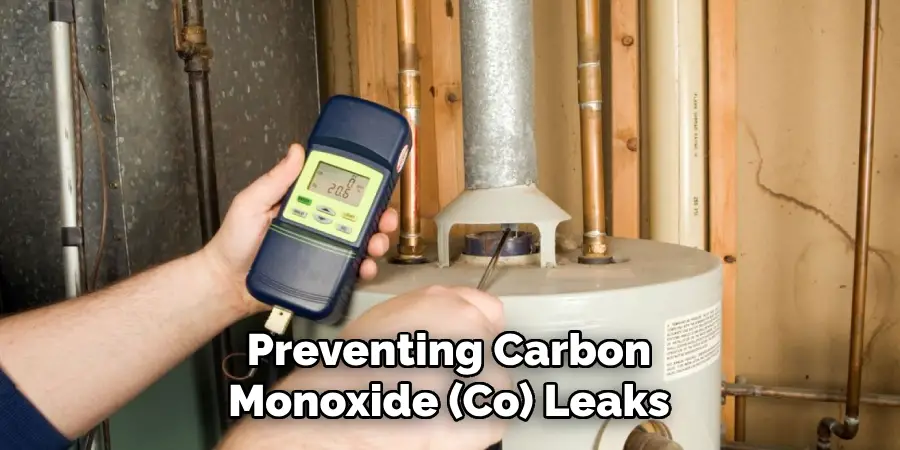
Preventing carbon monoxide (CO) leaks in your home is essential for ensuring the safety and well-being of all occupants. Here are some crucial measures you can take to mitigate the risk of CO poisoning:
A. Annual Furnace Maintenance
It cannot be overemphasized how vital annual maintenance of your furnace by a certified technician is. This routine check-up serves not only as a preventative measure for potential mechanical failures but also includes a thorough assessment for possible CO leaks within the system.
Ensuring that your furnace operates efficiently and safely can drastically reduce the risk of carbon monoxide exposure, safeguarding your household.
B. Never Block Vents or Flues
For the furnace and home heating systems to function correctly and safely, keeping all vents and flues unobstructed is critical. Furniture, decorations, or other items can block these crucial airways, impeding the proper flow of air and leading to the accumulation of harmful CO gas. Regularly inspect and maintain clear pathways for vents and flues to ensure they can adequately ventilate your home efficiently.
C. Install and Maintain CO Detectors
Installing carbon monoxide detectors near bedrooms and on every level of your home is a non-negotiable safety measure. These devices can provide an early warning in the event of CO buildup.
To ensure their effectiveness, test CO detectors regularly and abide by the manufacturer’s recommendations for replacement, typically every 5 to 10 years. This small investment can make a significant impact on your family’s safety.
D. Be Aware of Early Warning Signs
Awareness of the early signs that may indicate a CO leak is crucial. These can include unusual odors coming from your heating system, excessive condensation on windows, or unexplained flu-like symptoms among household members.
Should any of these warning signs become apparent, acting swiftly by calling a qualified technician to investigate and resolve any potential hazards is imperative. Being attuned to these early indicators can prevent severe consequences, ensuring a safe living environment for you and your loved ones.
Conclusion
In conclusion, taking carbon monoxide (CO) poisoning seriously is crucial due to the potentially fatal dangers posed by furnace leaks and other sources of this odorless, colorless gas. Understanding how to tell if furnace is leaking carbon monoxide is essential for preventing CO poisoning, symptoms of which can often be mistaken for common illnesses.
The installation and maintenance of CO detectors throughout the home, alongside scheduling regular furnace check-ups, are paramount for ensuring the safety and well-being of all household members. To support homeowners, numerous resources are available for finding certified HVAC technicians experienced in identifying and fixing potential hazards, as well as for learning more about CO safety and prevention.
Organizations such as the National Fire Protection Association (NFPA) and the Environmental Protection Agency (EPA) offer comprehensive guides and tips on their websites.
The responsibility of safeguarding your home from the silent threat of carbon monoxide rests in being proactive about maintenance and prevention measures.
By prioritizing the safety and well-being of your family, you take an important step toward creating a secure, healthy living environment. Remember, the best defense against CO poisoning is prevention through awareness, education, and timely action.

